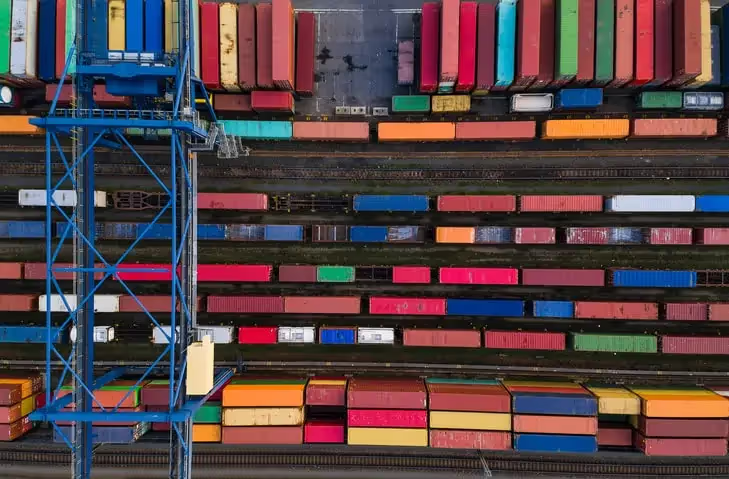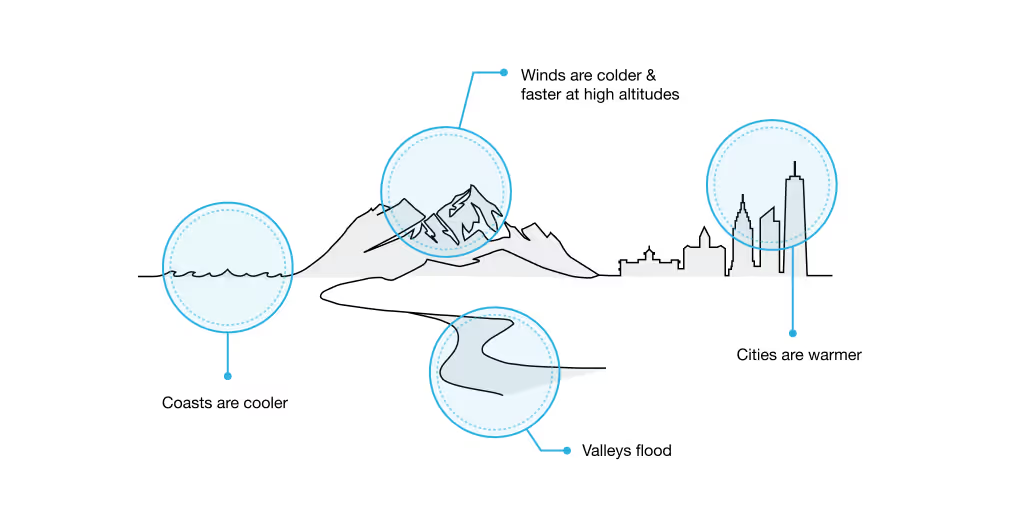
Today’s major organizations have supply chains that span numerous regions and countries across the globe, exposing businesses’ physical assets to a range of increasing climate-related dangers specific to each location along the supply chain.
Time and again, we have seen the impacts severe weather poses on supply chains across industries. For example, ten years ago, devastating floods caused Thailand's economic activity as the "factory of Asia" to grind to a halt. Supply chains were torn asunder, and the impact was felt around the world. And as recent as 2022, severe floods left a third of Pakistan under water and destroyed major export crops – from cotton to wheat – and put the country’s food and trade security at risk.
Between fires and floods and drought and hailstorms, climate perils have the potential to disrupt all types of companies—from tech giants to pharmaceutical companies—upending the production of goods and services, revenue, and the health, well-being and stability of people all over the world due to climate-related events causing delays in access to critical goods.
So where does that leave businesses? How can organizations best navigate challenges related to climate change and supply chains? Some organizations are getting ahead and are already in a better position than others.
In a recent webinar hosted by Commercial Risk, Jupiter Intelligence’s own experts on the topic—Sébastien Burgess, Senior Client Solutions Architect at Jupiter Intelligence, and Stuart Large, Business Development Director at Jupiter Intelligence—shared what every business needs to know about climate change and supply chains and what savvy leaders are doing to understand and mitigate the effects of extreme weather events on their supply chains. Here are the key takeaways from their presentation.
6 things you need to know about climate change and supply chains
#1: The frequency and severity of climate perils are widespread and only going to increase

For businesses with physical assets, supply chains, or logistical routes positioned around the world, the probability of being affected by events like these will increase.
#2: Businesses typically underestimate the potential impacts of climate change on their supply chains
Organizations tend to use historical weather data, looking back over the past few decades, to predict and assess their climate risk. However, future-looking scientific climate models (up to the year 2100) indicate there’s going to be an acceleration of climate-related events, rendering historical data less reliable.
#3: Most organizations do not have a clear picture of possible effects of climate change specific to their business
On the climate preparedness maturity curve, some organizations at the early stages of development may have leaders who are in denial that a problem even exists, but most companies are at least starting to allocate resources into investigating the impacts of climate change and what they might mean for their business.
The Evolution of Climate Analytics Integration

Only a select minority of companies—the most advanced—have a clear strategy for assessing climate risk and have taken the necessary steps to fully integrate their climate risk data into their broader enterprise business intelligence platforms.
Data cited by PwC reveals that while global business leaders are concerned about extreme weather, only about 40% of CEOs have a climate-related risk management strategy.
#4: To truly mitigate against adverse impacts to the supply chain, climate-change risk needs to be analyzed at the hyperlocal level
Most global climate models provide are solution or picture of climate change risk at the 100,000-kilometer level, but that’s not zoomed in enough. Due to microclimates, metrics can vary across short distances, and, as a result, businesses need to understand how climate change impacts their supply chain at the 90-meter level.
Spatial Resolution Matter | Topography

Facilities at the top of a hill, for instance, might be cooler and more wind prone compared to those located at the bottom of a valley, where there’s greater flood risk while factories located in cities are more prone to experiencing a heat island effect.
#5: Organizations need actionable climate risk analytics that quantify the specific potential extreme conditions that might influence the supply chain and the financial impact of each
From port operators concerned about extreme wind gusts that could force crane equipment operations to shut down to mining companies dependent on rail networks spanning thousands of kilometers, climate risk data has implications for whether equipment will function, whether the conditions will be safe for workers to do their jobs, and whether there will be disruptions to transport along the supply chain route.
ClimateScore Global: Decision-Useful Peril Metrics

Businesses need to know the likelihood of certain types of weather events occuring, how often they might take place, and what the financial implications are for the business.
#6: Savvy leaders are updating their supply chain strategy based on climate change risk
Using advanced climate risk analytics, organizations can unlock key insights to evaluate and optimize their supply chain management strategies to reduce costs.
Climate risk analytic providers can help your company look at your supplier types and locations that are the greatest risk and understand which countries and regions present the lowest risk to your supply chain, with a goal of ensuring your supply chain is located in geographic areas that are considered low risk for climate perils today as well as low risk for extreme weather events in the future.
What to Look for in a Climate Risk Analytics Provider

Founded in 2018, Jupiter Intelligence offers the most advanced climate risk analytics for your business. Our solutions are actionable and best-in-science and provide climate risk analysis projections of hyperlocal hazard estimates for businesses based on future expected changes in climate.
Our analytics tools help organizations like yours make more informed decisions for long-term viability and success and:
> Are transparent and backed by the latest science
> Provide actionable metrics aligned to business needs to enable longer-term climate planning
> Quantify the risk level of climate incidence by level of statistical confidence, to indicate likelihood of climate risk occurrence
> Are built off of global climate models and are layered in with weather observations, modeling for tropical cyclones and hurricanes (usually excluded from global climate models) and topographical information that affects local climate (what’s on the earth’s surface—such as hills, valleys, forest, deserts, etc.)
> Downscale climate risk data to a portfolio level from 100,000-kilometer resolution to a 90-meter resolution: We have data for every 90-meter area on the earth’s surface that explains how the key perils of flood, heat, cold, wind, wildfire hail, drought, and precipitation are going to change in five-year increments through to the end of the century
> Have been developed based on three different model scenarios: #1: SSP1 or RCP2.6, in alignment with Paris Agreement; #2: RCP4.5, the track we appear to be on now; and #3: RCP8.5, a worser-case scenario based on a carbon-intensive future where emissions increase and we see greater climate change
To learn more, see how we help organizations with their supply chain risk assessment and request a demo today or send us an email info@jupiterintel.com
.webp)
